Like all insects, sawflies have three body segments and three pairs of legs. The head includes a pair of compound eyes, a trio of simple eyes (ocelli), antennaeantenna:
the sensory organ emerging from the front of the head, usually between the compound eyes and above the clypeus; includes the flagellum, scape and pedicel
 , and complete mouthparts. The thoraxthorax:
, and complete mouthparts. The thoraxthorax:
the second and middle segment of the body, between the head and abdomen
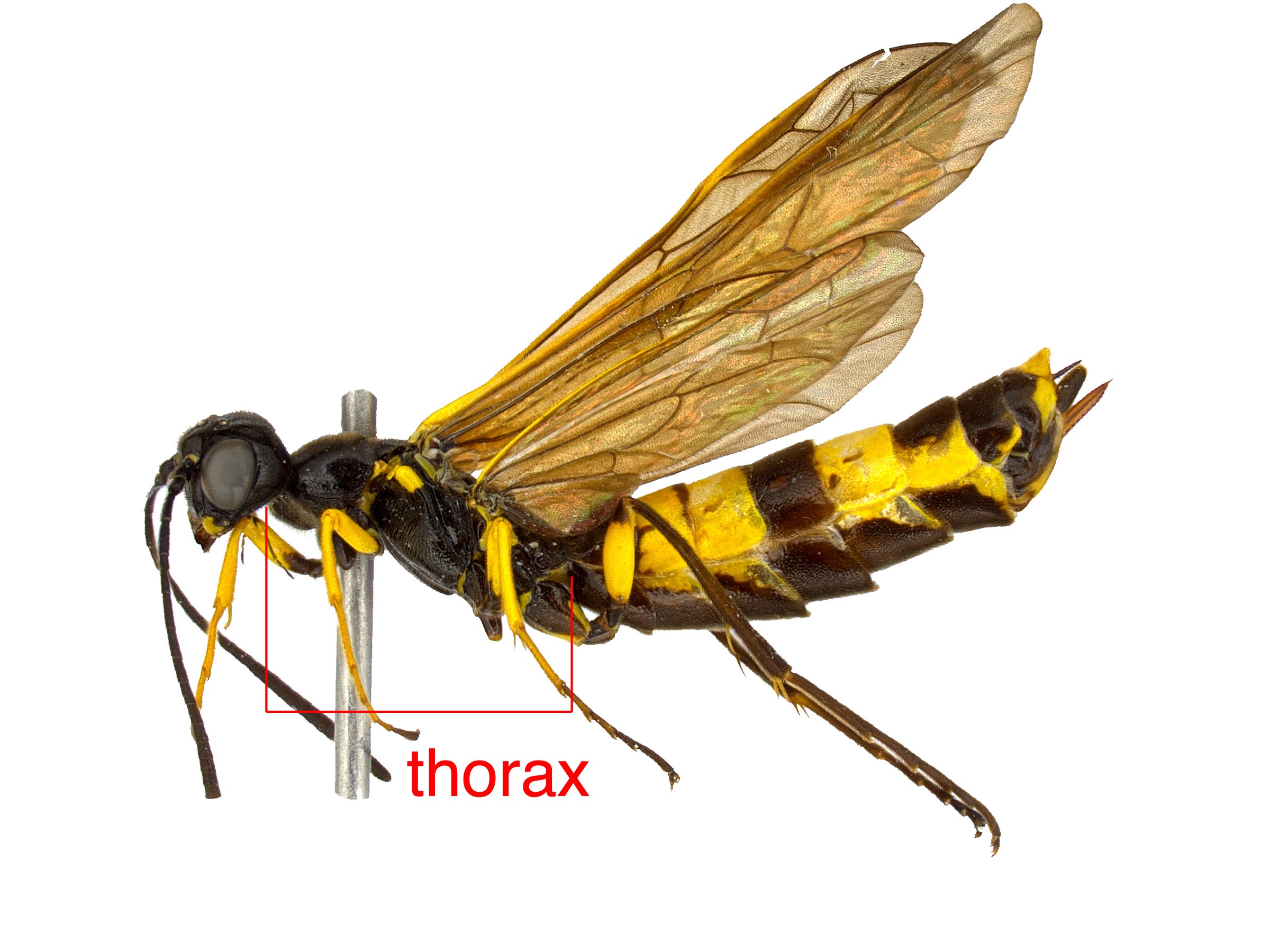 includes two pairs of wings and segmented legs. The thoraxthorax:
includes two pairs of wings and segmented legs. The thoraxthorax:
the second and middle segment of the body, between the head and abdomen
 is composed of three segments, designated from front to back by the prefixes "pro-", "meso-" and "meta-". There is a pair of legs on each thoracicthoracic:
is composed of three segments, designated from front to back by the prefixes "pro-", "meso-" and "meta-". There is a pair of legs on each thoracicthoracic:
of or on the thorax
segment, and a pair of wings on the meso- and metathoracic segments. Most sawflies can be recognized by a pair of cenchricenchrus:
a sclerotized eliptical lobe on the metascutum used to provide friction with underside of wings to hold them in place on the dorsum of the body while in rest
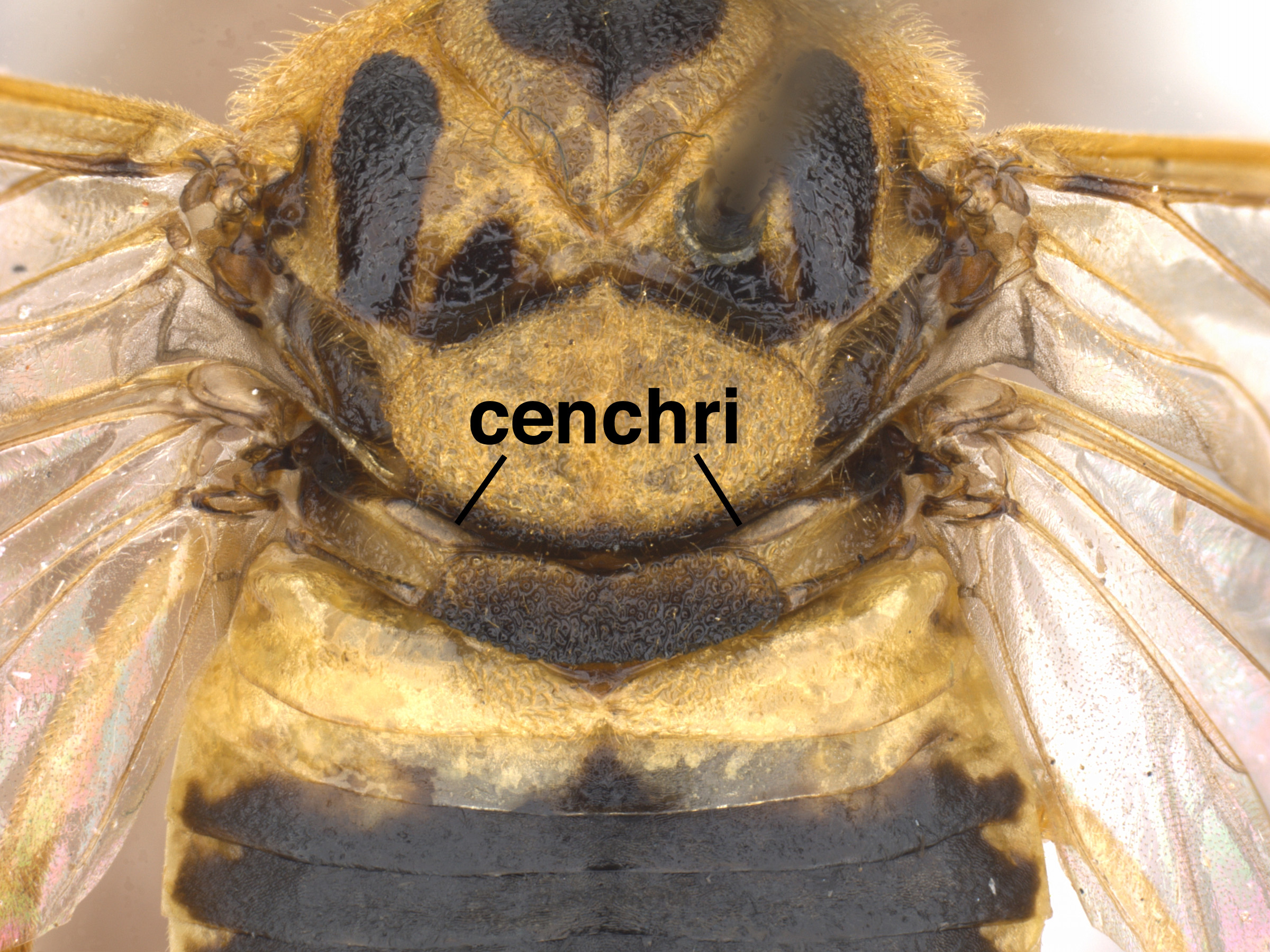 on the thoraxthorax:
on the thoraxthorax:
the second and middle segment of the body, between the head and abdomen
 .
.
Unlike bees and other Hymenopterans, sawflies do not have a constriction, or “waist” at the start of the abdomenabdomen:
the third and last segment of an insect's body; in sawflies this is usually made up of 11 segments (segments 9 and 10 often fused) ; rather, the first abdominal segment is broadly joined to the postnotumpostnotum:
; rather, the first abdominal segment is broadly joined to the postnotumpostnotum:
posterior section of the notum; also known as the subscutellum
of the metathorax. The abdomenabdomen:
the third and last segment of an insect's body; in sawflies this is usually made up of 11 segments (segments 9 and 10 often fused) has 10 visible segments, but sternitesternite:
has 10 visible segments, but sternitesternite:
a sclerotized segment of the abdominal sternum
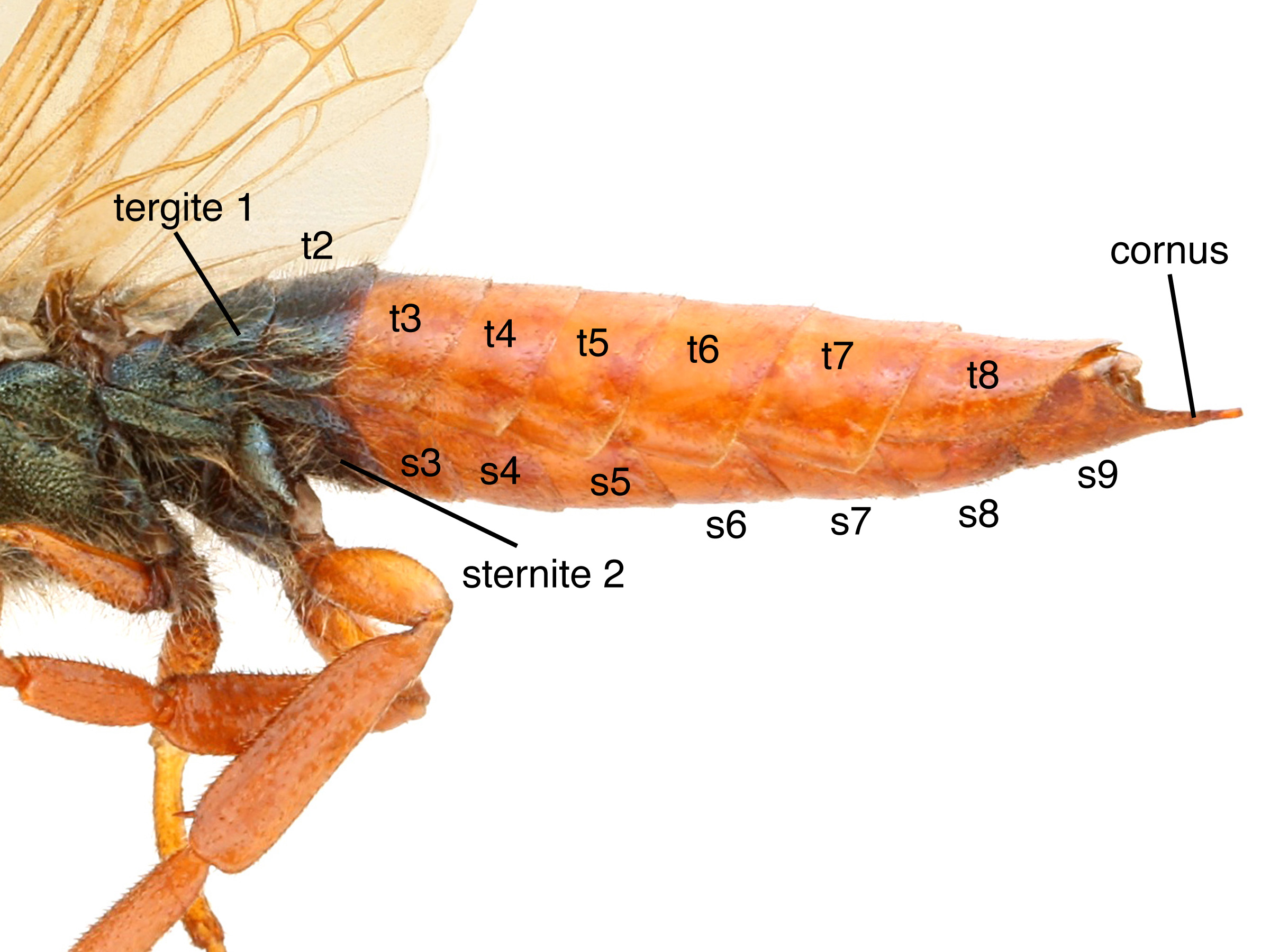 1 is lacking, and tergites 9-10 are often hidden in males and often fused together in females. In most sawflies, tergitetergite:
1 is lacking, and tergites 9-10 are often hidden in males and often fused together in females. In most sawflies, tergitetergite:
a sclerotized segment of the tergum
 1 (and rarely 2) has a center division line. Each leg has 5 tarsomeres, and in most sawflies, tarsomeretarsomere:
1 (and rarely 2) has a center division line. Each leg has 5 tarsomeres, and in most sawflies, tarsomeretarsomere:
a segment of the tarsus
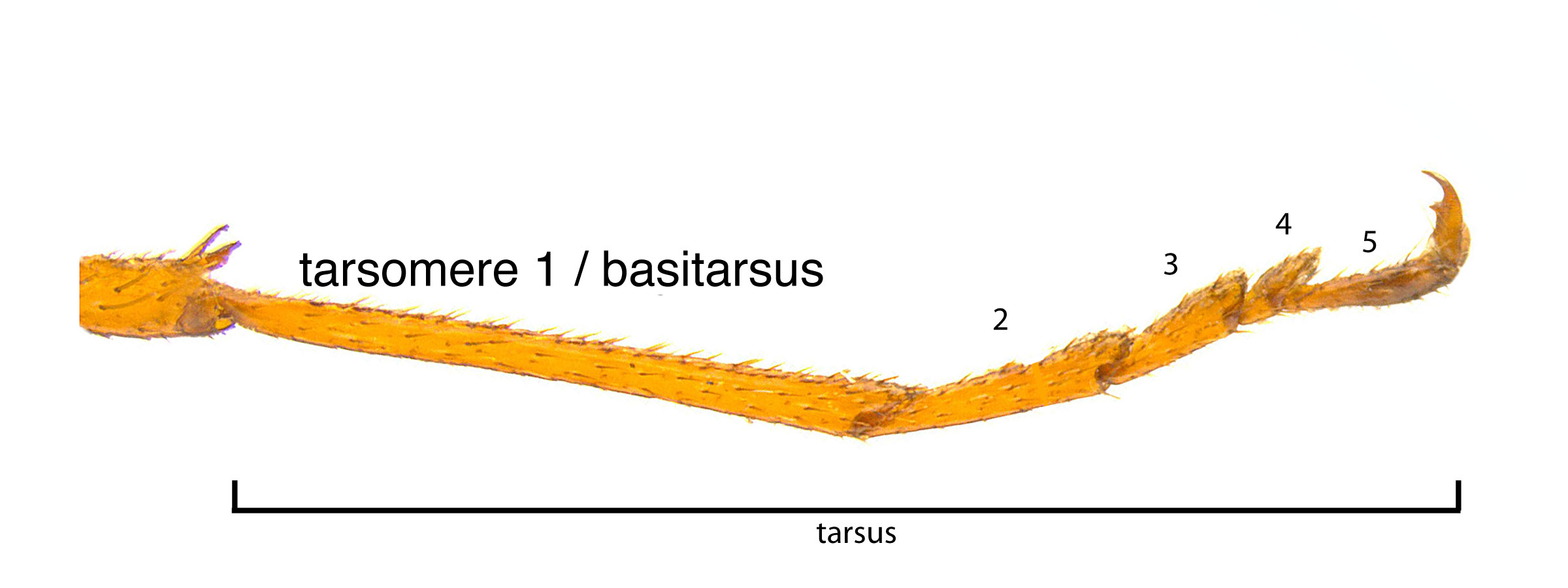 1-4 include a pad-like pulvilluspulvillus:
1-4 include a pad-like pulvilluspulvillus:
soft pads used for surface adhesion, located in sawflies on the first 4 segments of the tarsus
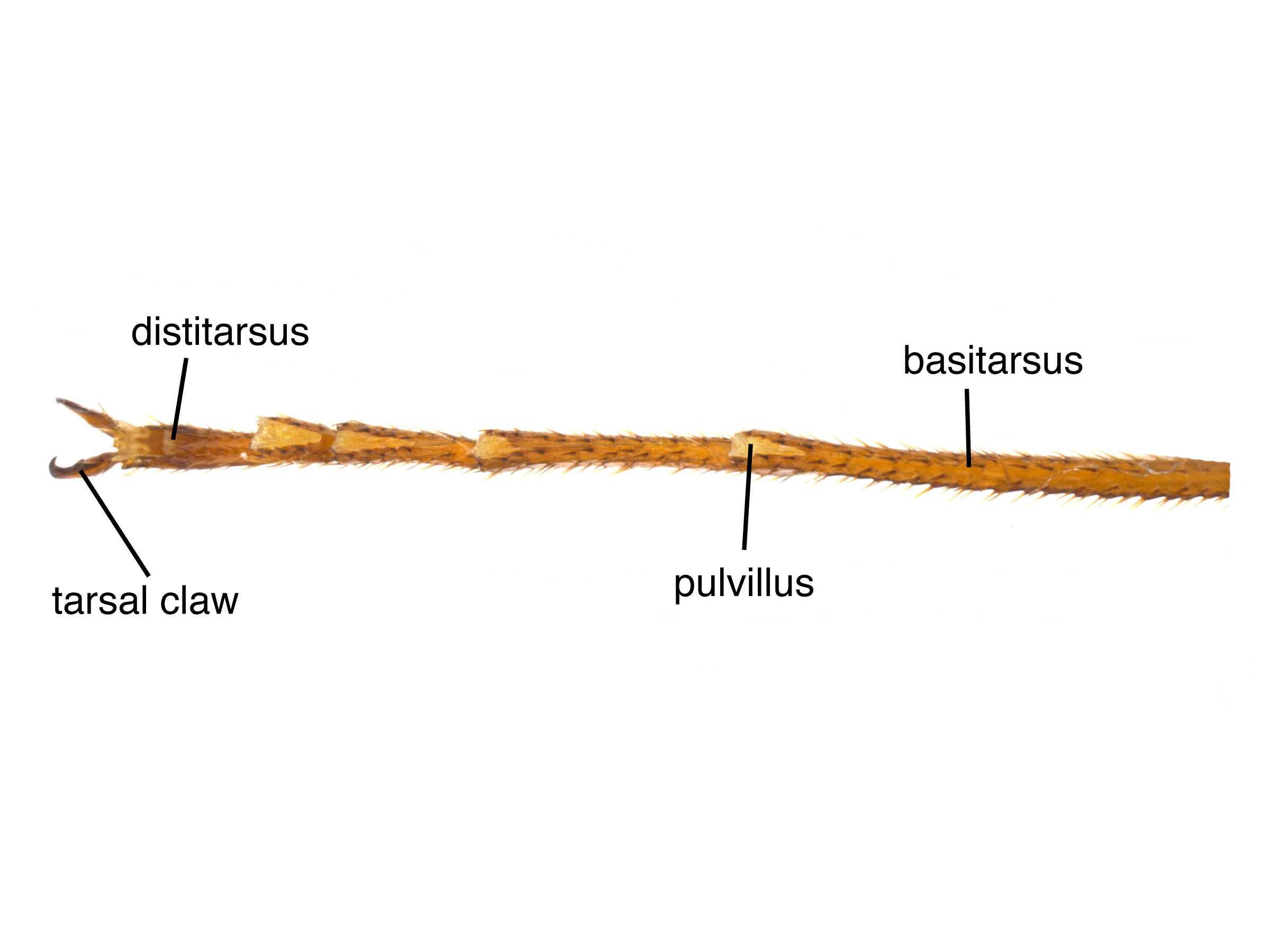 . The apicalapical:
. The apicalapical:
towards the apex; farthest away from the body
tarsomere includes a pair of tarsal claws.
The sex of a sawfly can be determined without dissection by the apicalapical:
towards the apex; farthest away from the body
abdominal segments and external genitalia. The female is most recognizable by the presence of an ovipositorovipositor:
the female organ that deposits eggs and is used to drill into plant tissue, located at the apex of the abdomen, made up of the lance and lancet
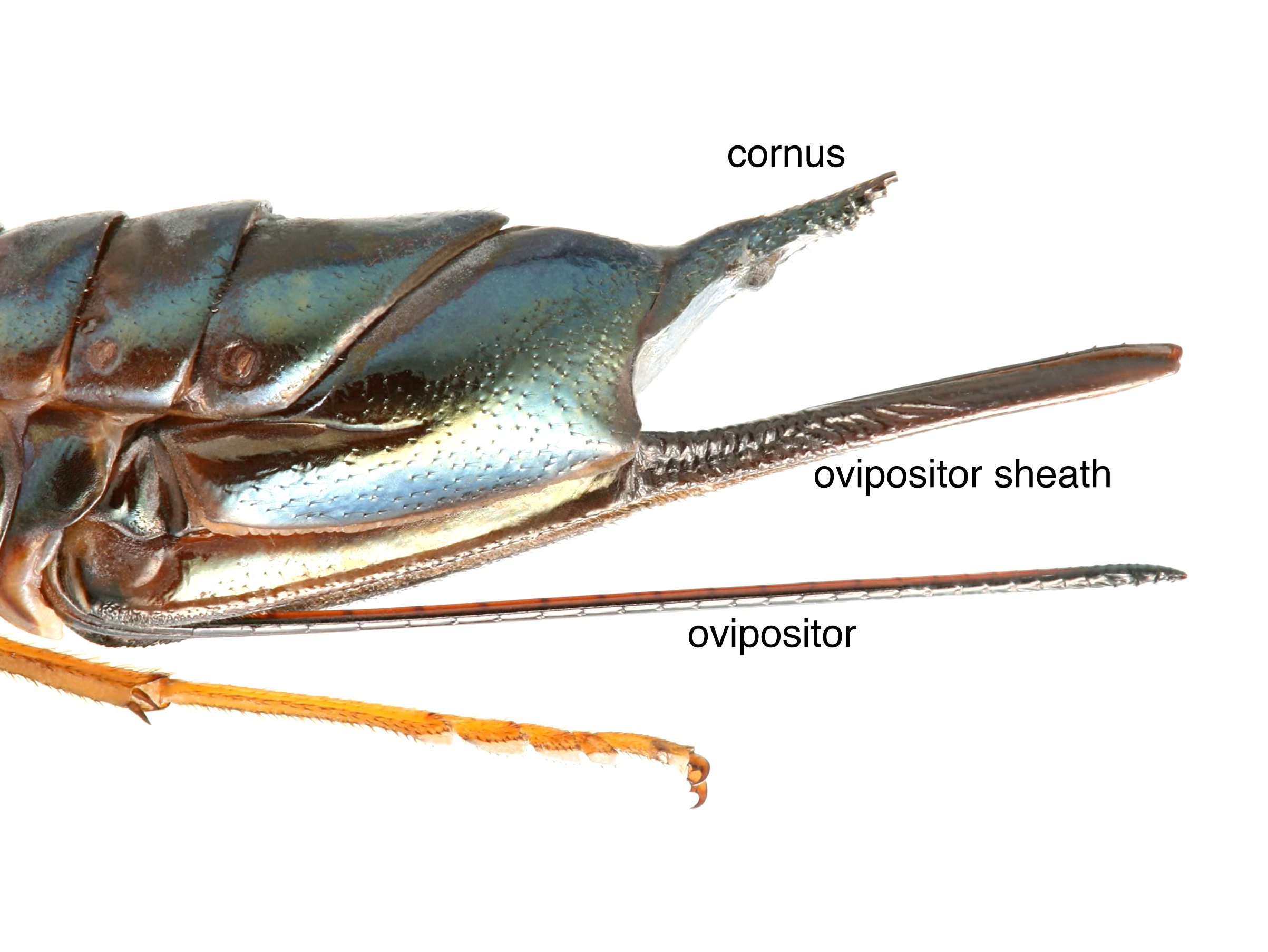 , or “saw”, for which the insect is named. The so-called sheaths, paired processes that cover the ovipositorovipositor:
, or “saw”, for which the insect is named. The so-called sheaths, paired processes that cover the ovipositorovipositor:
the female organ that deposits eggs and is used to drill into plant tissue, located at the apex of the abdomen, made up of the lance and lancet
 when not in use, are also readily visible.
when not in use, are also readily visible.
The diagrams below show general diagnostic characters; more specific anatomy is included in the glossary and on the individual fact sheets where relevant.
 , male and female, Sirex nitidus
, male and female, Sirex nitidus , male and female, Trachelus tabidus
, male and female, Trachelus tabidus